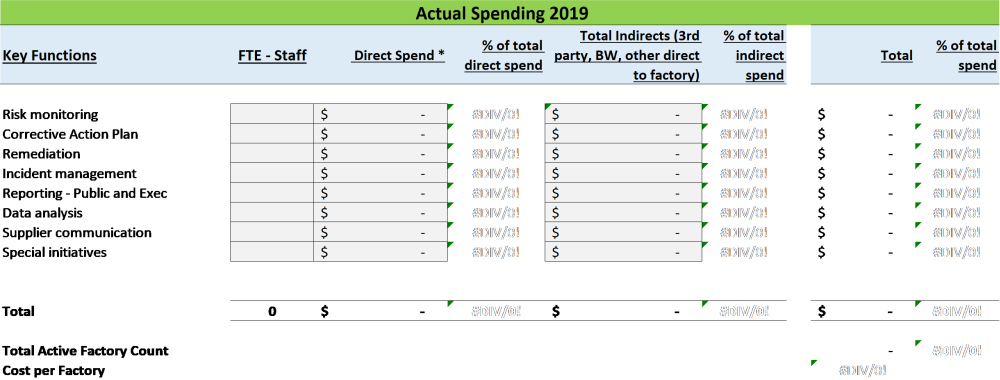Social Responsibility Program Cost of Ownership
In ELEVATE’s September Insights, Margot Sfeir and Rachel Brinkenhoff outlined in their article Preparing for the 2021 Budget and Three-Year Plan key questions you should be asking yourself as you plan for 2021. These questions focused on the tools and processes necessary to support a proactive programmatic approach.
The pandemic sorted companies into essential and non-essential. Company management has looked internally with the same lens to better understand what functions are essential to their business. As responsible sourcing professionals, not only do we need to think about the emerging supply chain risks that require greater attention and anticipate key topics that investors may decide to focus on in 2021, but we also need to be asking whether the social responsibility functions that have become standard are truly essential in todays environment. How important is it to continue our existing approaches that may have limited impact in the short term, such as collecting evidence for corrective action plans, maintaining a detailed audit quality management program, or continuing membership payments to multiple industry groups or trade associations.
The combination of the trade war and COVID-19 have put unprecedented financial pressure on suppliers. Few sourcing organizations have an appetite to add cost to the supply chain. Understanding the social responsibility cost of ownership is critical. To figure this out, take the line-item budget for all direct (e.g., internal staffing compensation, benefits, travel, hotel, other costs) spend and add to indirect (e.g., factory spend on your audits, remediation projects) spend to create total cost of ownership.

Dividing the total cost (both direct and indirect) by total active factories will create an average social responsibility program cost per factory.
In our experience, this cost tends to range from $1,500 to $8,500 per factory, depending on the intensity of the program. Most are in the $1,500 to $2,500 range. I and if the average factory cost exceeds $12,500 per factory, this should trigger a review to really understand the essential nature of the value add from the additional spend per factory.
In the process, you may find yourself asking important trade-off questions. Would your company be better off with a more proactive approach to incident management, rather than spending money on a team of people collecting evidence for corrective action plans? Should your company be dedicating so much money to audit operations/quality management, when it might be redirected to a more strategic and potentially impactful supplier ownership program? If we reduce our spending on audits today and instead invest in better analytics skills and tools, can we expand the reach of our program with predictive risk assessments?
If you are interested in evaluating the cost of ownership for your program, or have questions about potential trade-offs, the ELEVATE team is happy to be your thought partner.
These blogs are written by ELEVATE staff members or associates and the views and opinions expressed are not necessarily those of ELEVATE.
About the author
